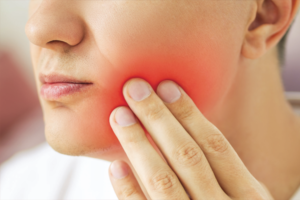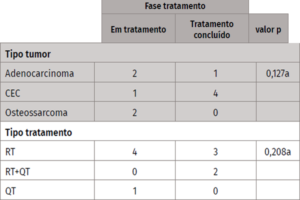Artigo avalia a estabilidade primária de implantes cone-morse obtida com a utilização de três técnicas de osteotomia em osso de baixa densidade.
AUTORES
Paulo Roberto Blank Gonçalves
Mestre em Implantodontia – Faculdade São Leopoldo Mandic.
Orcid: 0000-0001-5030-2283.
Carlos Eduardo Francischone
Doutor em Reabilitação Oral e professor de Implantodontia – Faculdade São Leopoldo Mandic.
Orcid: 0000-0003-2627-5646.
Alexandre Marcelo de Carvalho
Doutor em Implantodontia e professor de Implantodontia – Faculdade São Leopoldo Mandic.
Orcid: 0000-0001-8080-8314.
Bruno Salles Sotto Maior
Doutor em Prótese Dental e professor do Depto. de Clínica Odontológica – Universidade Federal de Juiz de Fora.
Orcid: 0000-0002-9462-0299.
RESUMO
Objetivo: avaliar a estabilidade primária de implantes cone-morse obtida com a utilização de três técnicas de osteotomia em osso de baixa densidade (tipo IV) proveniente de costelas bovinas frescas. Material e métodos: 30 implantes foram divididos de acordo com a técnica utilizada: grupo FC (fresagem convencional); grupo SF (subfresagem); e grupo OD (osseodensificação). Imediatamente após a instalação dos implantes, o ISQ foi aferido utilizando-se um dispositivo de RFA, e os valores de torque de inserção e remoção foram mensurados utilizando-se um torquímetro digital. Os dados foram analisados pelo teste Anova-1 critério e teste de Tukey (nível de significância 5%). Resultados: os valores ISQ, torques de inserção e remoção no grupo OD (71 ± 3 Ncm, 40 ± 7 Ncm e 38 ± 6 Ncm) foram significativamente maiores (p < 0,05) do que no grupo SF (67 ± 3 Ncm, 33 ± 6 Ncm e 31 ± 6 Ncm), e estes significativamente maiores (p < 0,05) do que no grupo FC (56 ± 3 Ncm, 23 ± 4 Ncm e 20 ± 3 Ncm). Conclusão: a técnica de osseodensificação mostrou-se superior às técnicas de subfresagem e fresagem convencional quanto à estabilidade primária de implantes cone-morse instalados em osso de baixa densidade de costelas bovinas.
Palavras-chave – Implantes dentários; Interface osso-implante; Osteotomia; Torque; Análise de frequência de ressonância.
ABSTRACT
Objective: to evaluate the primary stability of Morse taper implants after three osteotomy techniques were used in the low-density bone (type IV) of fresh bovine ribs. Material and methods: thirty implants were divided into three groups, according to the bone cutting technique used: group CD (conventional drilling); group UD (undersized drilling); and group OD (osseodensification). The ISQ was determined immediately after installing the implants, by using an RFA device, and the insertion and removal torque values were measured by using a digital torque wrench. The data were statistically analyzed using one-way analysis of variance and Tukey’s test. The level of significance used was 5%. Results: the ISQ, and the insertion and removal torque values found for group OD (71 ± 3 Ncm, 40 ± 7 Ncm and 38 ± 6 Ncm) were significantly higher (p < 0.05) than those found for group UD (67 ± 3 Ncm, 33 ± 6 Ncm and 31 ± 6 Ncm), and these were significantly higher (p < 0.05) than those found for group CD (56 ± 3 Ncm, 23 ± 4 Ncm and 20 ± 3 Ncm). Conclusion: the osseodensification technique proved superior to the conventional and undersized drilling techniques for increasing the primary stability of Morse taper implants placed in low-density bone of bovine ribs.
Key words – Dental implants; Bone-implant interface; Osteotomy; Torque; Resonance frequency analysis.
Recebido em set/2021
Aprovado em nov/2021
Referências
- Albrektsson T, Brånemark P-I, Hansson HA, Lindstrom J. Osseointegrated titanium implants. Requirements for ensuring a long-lasting, direct bone-to-implant anchorage in man. Acta Orthop Scand 1981;52(2):155-70.
- Javed F, Romanos GE. The role of primary stability for successful immediate loading of dental implants. A literature review. J Dent 2010;38(8):612‐20.
- Meredith N. Assessment of implant stability as a prognostic determinant. Int J Prosthodont 1998;11(5):491-501.
- Elias CN, Rocha FA, Nascimento AL, Coelho PG. Influence of implant shape, surface, morphology, surgical technique and bone quality on the primary stability of dental implants. J Mech Behav Biomed Mater 2012;16:169-80.
- Bezerra F, Ribeiro EP, Bittencourt S, Lenharo A. Influência da macrogeometria na estabilidade primária dos implantes em diferentes densidades ósseas. ImplantNews 2010;7(6):813-8.
- Cruz MLG. Influência de fresas rotatórias e expansores ósseos na estabilidade primária dos implantes dentários em situações de pouca espessura óssea: estudo in vitro. ImplantNews 2014;11(5):585-93.
- Macêdo FGC, Barreno AHC, Goulart DR, Guillen GA, Sá BCM, Nóia CF. Influência de técnicas de preparo do leito implantar na estabilidade primária de implantes dentários cônicos: estudo ex vivo. ImplantNews Reab Oral 2020;5(4):580-6.
- Misch CE. Bone classification, training keys to implant success. Dent Today 1989;8(4):39-44.
- Javed F, Ahmed HB, Crespi R, Romanos GE. Role of primary stability for successful osseointegration of dental implants: factors of influence and evaluation. Interv Med Appl Sci 2013;5(4):162-7.
- Pai UY, Rodrigues SJ, Talreja KS, Mundathaje M. Osseodensification – a novel approach in implant dentistry. J Indian Prosthodont Soc 2018;18(3):196-200.
- Degidi M, Daprile G, Piatelli A. Influence of underpreparation on primary stability of implants inserted in poor quality bone sites: an in vitro study. J Oral Maxillofac Surg 2015;73(6):1084-8.
- Huwais S, Meyer EG. A novel osseous densification approach in implant osteotomy preparation to increase biomechanical primary stability, bone mineral density, and bone-to-implant contact. Int J Oral Maxillofac Implants 2017;32(1):27-36.
- Kanathila H, Pangi A. An insight into the concept of osseodensification-enhancing the implant stability and success. J Clin Diagn Res 2018;12(7):ZE01-3.
- Lahens B, Neiva R, Tovar N, Alifarag AM, Jimbo R, Bonfante EA et al. Biomechanical and histologic basis of osseodensification drilling for endosteal implant placement in low density bone. An experimental study in sheep. J Mech Behav Biomed Mater 2016;63:56-65.
- Cehreli MC, Kokat AM, Comert A, Akkocaoglu M, Tekdemir I, Akça K. Implant stability and bone density: assessment of correlation in fresh cadavers using conventional and osteotome implant sockets. Clin Oral Implants Res 2009;20(10):1163-9.
- Akça K, Kokat AM, Komet A, Akkocaoglu M, Tekdemir I, Cehreli MC. Torque-fitting and resonance frequency analysis of implants in conventional sockets versus controlled bone defects in vitro. Int J Oral Maxillofac Surg 2010;39(2):169-73.
- Farré-pagés N, Augé-Castro ML, Alaejos-Algarra F, Mareque-Bueno J, Ferrés-Padró E, Hernández-Alfaro F. Relation between bone density and primary implant stability. Med Oral Patol Oral Cir Bucal 2011;16(1):e62-7.
- Goswami MM, Kumar M, Vats A, Bansal AS. Evaluation of dental implant insertion torque using a manual ratchet. Med j Armed Forces India 2015;71(suppl.2):327-32.
- Koga MM, Salvoni AD, Wassall T. Evaluation of increased primary stability in dental implants with change in instrumentation through the integration of torque and resonance frequency analysis. Clin Lab Res Den 2018:1-15.
- Padhye NM, Padhye AM, Bhatavadekar NB. Osseodensification – a systematic review and qualitative analysis of published literature. J Oral Biol Craniofac Res 2020;10(1):375-80.
- Palaskar JN, Joshi N, Shah PM, Gullapalli P, Vinay V. Influence of different implant placement techniques to improve primary implant stability in low-density bone: a systematic review. J Indian Prosthodont Soc 2020;20(1):11-6.
- Hindi AR, Bede SY. The effect of osseodensification on implant stability and bone density: a prospective observational study. J Clin Exp Dent 2020;12(5):e474-8.
- Iezzi G, Scarano A, Di Stefano DA, Arosio P, Doi K, Ricci I et al. Correlation between the bone density recorded by a computerized implant motor and by a histomorphometric analysis: a preliminary in vitro study on bovine ribs. Clin Implant Dent Relat Res 2015;17(suppl.1):e35-44.
- Di Stefano DA, Arosio P, Piatelli A, Perotti V, Iezzi G. A torque measuring micromotor provides operator independent measurements marking four different density areas in maxillae. J Adv Prosthodont 2015;7(1):51-5.
- Di Stefano DA, Perrotti V, Grecco GB, Campucci C, Arosio P, Piatelli A et al. The effect of undersizing and tapping on bone to implant contact and implant primary stability: a histomorphometric study on bovine ribs. J Adv Prosthodont 2018;10(3):227-35.
- Alghamdi H, Anand P, Anil S. Undersized implant site preparation to enhance primary implant stability in poor bone density: a prospective clinical study. J Oral Maxillofac Surg 2011;69(12):e506-12.
- O’Sullivan D, Sennerby L, Meredith N. Measurements comparing the initial stability of five designs of dental implants: a human cadaver study. Clin Implant Dent Relat Res 2000;2(2):85-92.
- Friberg B, Ekestubbe A, Mellström D, Sennerby L. Brånemark implants and osteoporosis: a clinical exploratory study. Clin Implant Dent Relat Res 2001;3(1):50-6.
- Stocchero M, Toia M, Cecchinato D, Becktor JP, Coelho PG, Jimbo R. Biomechanical, biologic, and clinical outcomes of undersized implant surgical preparation: a systematic review. Int J Oral Maxillofac Implants 2016;31(6):1247-63.
- Trisi P, Berardini M, Falco A, Vulpiani MP. New osseodensification implant site preparation method to increase bone density in low-density bone: in vivo evaluation in sheep. Implant Dent 2016;25(1):24-31.
- Ersanli S, Karabuda C, Beck F, Leblebicioglu B. Resonance frequency analysis of one-stage dental implant stability during the osseointegration period. J Periodontol 2005;76(7):1066-71.
- Miyamoto I, Tsuboi Y, Wada E, Suwa H, Iizuka T. Influence of cortical bone thickness and implant length on implant stability at the time of surgery-clinical, prospective, biomechanical, and imaging study. Bone 2005;37(6):776-80.
- Nkenke E, Hahn M, Weinzierl K, Radespiel-Tröger M, Neukam FW, Engelke K. Implant stability and histomorphometry: a correlation study in human cadavers using stepped cylinder implants. Clin Oral implants Res 2003;14(5):601-9.
- Falisi G, Severino M, Rastelli C, Bernardi S, Caruso S, Galli M et al. The effects of surgical preparation techniques and implant macro-geometry on primary stability: an in vitro study. Med Oral Patol Oral Cir Bucal 2017;22(2):e201-6.





